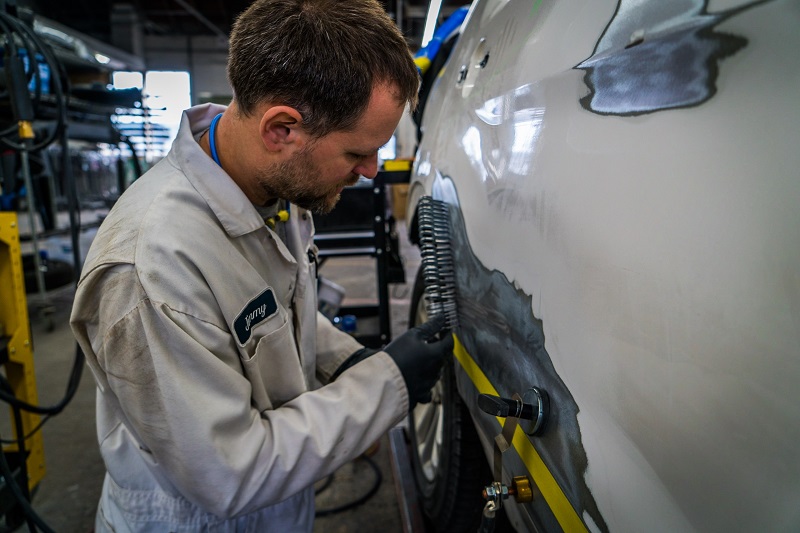Is your vehicle being repaired the way that your manufacturer intended? If you’re wondering “what is OEM” and why OEM procedures matter when your car is repaired, you’ve come to the right place.
Today’s Vehicles are More Complex
In 2019, only 54.2% of collision repairers polled in the “Who Pays for What” survey said they are looking up OEM procedures for every repair, said John Huetter in an article in Repairer Driven News. Vehicles are changing, and the way we repair them needs to change. The collision repair industry used to rely on experience to guide us in our repair plans, but today’s vehicles are so much more complex and require extensive research to ensure we are repairing them exactly the way the engineers who designed them intended. Just because we did it one way for 20 years does not mean we can continue to do it that way.
Finding What Is OEM Recommended For Each Repair
According to a recent Repairer Driven News Article titled “BMW: Look up OEM procedures fresh on every repair,” BMW recommends that collision repair shops look up procedures for each repair and do not rely on memory or documentation from past repairs. In the article, “BMW North America collision program manager Jonathan Inzano acknowledged that “it sounds a little crazy,” but a rule of thumb would be “as soon as you print it, it’s outdated.”
Automakers Are the Final Authority
In another article written by Jason Stahl, “OEM Repair Procedures: The New Normal,” Gerry Bonanni, Ford’s Senior Damageability Engineer, said, “Automakers are the first and final authority on their vehicles. Engineers spend years developing new models, and repairability is a key consideration during that process, with the requirements of various parts, materials, and safety systems taken into account to achieve the safest repairs.”
Old Dominion’s OEM Repair Process
At Old Dominion Collision, we take your vehicle repair seriously and incorporate looking up and following repair procedures into every step of the process. When you bring your vehicle in for a preliminary estimate, our estimating team can look up repair procedures specific to your year, make, and model and ensure your preliminary estimate is written as thoroughly as possible.
Identifying Damage and Necessary OEM Procedures
Once your vehicle is dropped off for repairs, it goes through an extensive disassembly process so that we can identify all damage and then look up any procedures required to repair it. At this point, we also look up safety inspections required and make sure that any ADAS (Advanced Driver Assist Systems) have been addressed. Next, your vehicle is handed over to our trained technicians, who will reference what is OEM recommended for repair procedures as they move forward with repairs.
During repairs, our shop managers are following up with technicians to make sure they have the information they need to perform the repair properly and safely and that they are following the repair procedures. Often, if your vehicle is equipped with ADAS, we will send it to the dealer to handle calibrations of that equipment.
Ensuring Your Vehicle is Safe to Drive
At the end of your repair, our team will perform a final scan of the computer system and a final quality inspection, ensuring that all items on the estimate have been completed and that your vehicle looks and functions as it should. Our goal is to return the vehicle to you looking great, but more importantly, operating safely.
What Happens When OEM Procedures Are Ignored
There are many things that can go wrong if your repair is not repaired with what is OEM recommended. Some that you may not be aware of until it is too late. In the article referenced above, Jason Stahl discusses the notorious John Eagle Case, a civil suit against a repair facility that chose not to follow Honda’s OEM repair procedures when replacing the roof on a Honda Fit because the insurance company would not agree to pay for it to be done correctly.
The vehicle owners were in a subsequent accident, and due to the improper repair, they sustained devastating injuries. The case ended with a multi-million-dollar verdict against the body shop. Though this example is extreme, the dangers exist, even in minor repairs.
Determining the Full Extent of Damage
Many of today’s vehicles are designed with radar sensors attached to the rear bumper, so what may appear to you as a minor dent might have unintended consequences for the electronic safety systems on your vehicle. If not repaired correctly, according to what is OEM approved, that sensor could fail to detect an object or person when backing up or changing lanes.
Our focus is repairing your vehicle to the highest standards, and we are not willing to compromise that. If you are looking for the peace of mind that comes with knowing your vehicle was repaired according to OEM recommended procedures, then contact us online or call us today at 541-485-3368!
Sources
https://www.repairerdrivennews.com/2021/03/16/bmw-look-up-oem-procedures-fresh-on-every-repair
https://www.bodyshopbusiness.com/oem-repair-procedures-the-new-normal/


Recent Comments